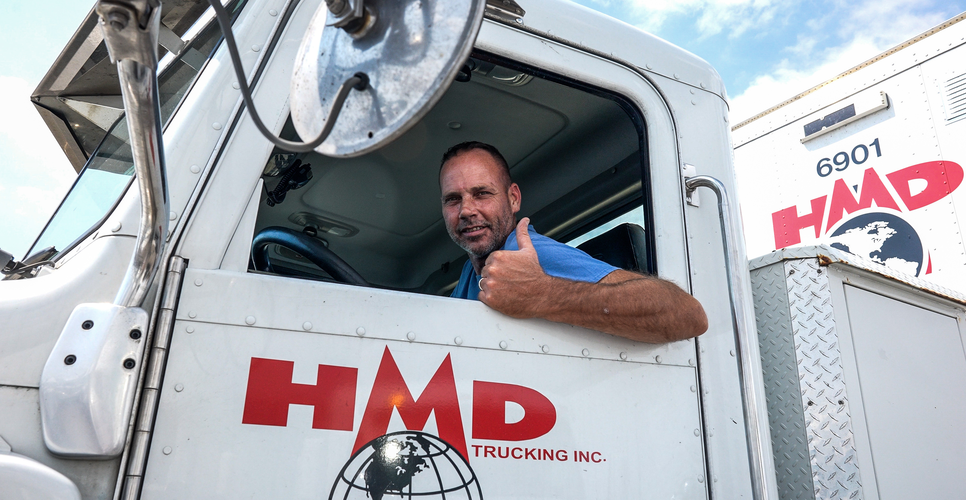Counting Miles and Dollars: A Deep Dive into Truck Drivers’ Salaries
Introduction to Truck Drivers’ Salaries
Truck drivers, you know, play a pivotal role in really propelling the American economy forward—literally! They transport goods across vast distances, making sure that products reach consumers in a timely manner. For example, a seasoned driver named Mike often shares his stories about that long journey from Texas to California, where he delivered fresh produce to grocery stores. This, in turn, stocks the shelves of bustling New York markets, ensuring that families have access to healthy meals even amid the city’s frenetic pace.
Meanwhile, the demand for drivers is surging, sparking more conversations about their pay, benefits, and the challenges they encounter daily. Earnings for truck drivers can vary quite a bit, influenced by factors like experience, location, the type of cargo they haul, and whether they’re compensated by the mile or receive a flat salary.
So, in this section, we will dive into truck drivers’ salaries, examining the highs and lows of this essential profession, which is becoming increasingly vital to urban life, especially in places like New York. The constant flow of goods, after all, keeps the city alive and buzzing.
Factors Influencing Truck Drivers’ Earnings
When we talk about the earnings of truck drivers, there are, well, several key factors that really influence their income, even in a vibrant city like New York. Experience, for instance, plays a crucial role; drivers who have spent years on the road usually command higher pay because, you know, their skills and solid safety records make them more valuable. Take Mike, a seasoned driver with over a decade of experience; he often shares stories over coffee in a cozy diner about how his expertise has kept him out of danger, which really emphasizes his worth when it comes to negotiating for better compensation.
Now, the type of cargo drivers are transporting also has an impact on earnings. Hauling hazardous materials, for example, generally results in better pay, not too unlike the way navigating the chaotic streets of Manhattan demands a different skill set altogether. Plus, route length and mileage can further affect income; drivers working in high-demand areas, such as those making deliveries in Brooklyn or the Bronx, are likely to enjoy heftier paychecks. A friend of mine once discovered that driving through bustling urban centers like Seattle in the Pacific Northwest yielded significantly more than, let’s say, rural routes.
Moreover, the structure of compensation a company has—whether it’s miles-based, hourly, or a fixed salary—can, you know, dramatically change the income landscape. Lastly, we really shouldn’t overlook the importance of benefits, like health insurance and retirement plans. These perks can greatly enhance a driver’s overall pay package, making it essential to really assess the entire compensation offering while, you know, navigating the complexities of life in the city.
Types of Truck Driving Jobs and Their Pay Scales
So, you know, when it comes to truck driving, there’s actually a whole range of roles out there, and the pay, well, it can really fluctuate quite a bit depending on your experience and the kind of cargo you’re hauling. For instance, long-haul drivers, the ones who, like, traverse the vast highways on those epic cross-country trips, usually bring home between $45,000 and $80,000 a year. It’s interesting—I’ve got a buddy who drives long-haul, and he often shares stories about the incredible landscapes he navigates, from the arid deserts of Nevada to the, you know, frenetic streets of New York City, where he maneuvers through the legendary traffic and delivers goods buzzing with the city’s lively vibe—all while collecting a pretty decent paycheck.
On the flip side, regional drivers stick closer to home, operating within specific states and earning somewhere around $50,000 to $70,000 annually. Then you’ve got local drivers, who, after their shifts, return to the comforts of their Brooklyn apartments or cozy homes in Queens, usually making about $40,000 to $60,000 each year. And let’s not forget the specialty drivers—those brave souls dealing with hazardous materials or oversized loads—who can actually rake in more than $100,000, which is, you know, quite a chunk of change.
So, if you’re thinking about diving into the driving world, getting a clear grasp of these pay differences is super crucial for, like, maximizing your earnings effectively!
Understanding Pay Structures: Per Mile vs. Salary
So, truck drivers in New York, you know, they generally earn their income in two primary ways: by the mile or through a set salary. When they choose to earn by the mile, they get paid based on how far they drive, which is, like, a great option for those who really enjoy the excitement of cruising down open highways. Take Mike, for instance—a long-haul driver who relishes the freedom of navigating those expansive roadways. He often zooms past iconic landmarks, like the Empire State Building, feeling a sense of pride because, well, the more distance he covers, the bigger his paycheck gets. Conversely, there are salaried drivers who favor the predictability of a regular paycheck, which is pretty valuable in a city where, you know, rent and everyday expenses can really add up. Each earning method has its perks and pitfalls, making it super important for drivers to grasp these distinctions as they think about their careers and financial futures in the ever-evolving world of New York’s trucking industry.
Cost of Living Considerations for Truck Drivers

Truck driver salaries can, you know, vary quite a bit based on location. In bustling cities like New York, where, well, rent for a one-bedroom apartment in Manhattan can easily soar, drivers often seek better pay to offset those steep costs. Even though they might earn more than their counterparts in rural Nebraska, the high price of groceries from local delis and, oh, the expense of navigating congested streets can make them feel, like, less financially secure. On the flip side, salaries in the countryside tend to dip due to lower living costs. Yet, it’s important to recognize that salary alone doesn’t, you know, tell the whole story. Influential factors such as housing, healthcare, and fuel prices on busy highways substantially impact how much drivers actually manage to keep in their pockets. Plus, drivers often find themselves incurring extra expenses for essentials, like, you know, maintaining their trucks, grabbing a quick coffee at a street cart, or buying meals from food trucks during their routes. Therefore, when evaluating a truck driver’s salary, it’s crucial to consider all these factors to get a, well, comprehensive understanding of their lifestyle.
The Impact of Experience on Salary
Experience, well, it plays a crucial role in shaping a truck driver’s paycheck. Picture this: in the hustle and bustle of New York, with its ceaseless honking cabs and throngs of pedestrians, fresh faces in the industry find their starting salary lingering around the national average—a little lackluster, especially when you consider the city’s sky-high living expenses. But, you know, as you accumulate miles cruising through the diverse terrains enveloping the city, your earnings have the potential to soar. I remember chatting with a veteran driver named Mike at a rest stop right off the George Washington Bridge; he recounted how, after five years on the road, his income surged from $40,000 to a staggering $75,000. That impressive jump didn’t just happen by chance; it reflected his refined skills and the specialized routes he was now tackling, including trips to the famous Fulton Fish Market. Moreover, as you gain experience, you unlock opportunities for endorsements that can give your income a serious lift, especially for those drivers hauling hazardous materials or oversized loads through the crowded streets of Manhattan. So, you might wonder, what’s the takeaway? In this line of work, mastering your craft really does pay off big time!
Benefits and Bonuses in the Trucking Industry
Challenges and Expenses Faced by Truck Drivers
Truck drivers in New York, well, they encounter a whole array of challenges that can really disrupt their paychecks, creating this tough financial situation they navigate daily. For starters, the long hours on the road can leave them feeling, like, utterly drained. I once chatted with a driver named Mark, who recounted a trip where he drove for 14 hours straight. He found himself too exhausted to enjoy a slice of pizza he had picked up from this buzzing pizzeria in Brooklyn. This level of exhaustion doesn’t just impact their safety, but it can also hinder their ability to, you know, complete the job efficiently.
On top of that, skyrocketing fuel prices gnaw at their profits, while the expenses related to keeping their trucks in good shape add yet another layer of strain. Many drivers, unfortunately, must also handle the costs of health insurance and stashing away something for retirement, making it super tough to save anything for the future. Plus, their chaotic schedules often whisk them away from home, leading to missed moments like weekend strolls through Central Park or family gatherings, which really places a strain on personal relationships. All these factors really pile up, contributing to the significant challenges truck drivers face in maintaining their livelihoods.
Future Trends in Truck Driver Compensation
There’s this kind of, well, growing demand for freight transportation happening these days, which could, you know, disrupt how truck drivers earn their wages, particularly in a bustling city like New York, where the endless flow of goods really fuels daily life. As the trucking landscape evolves, we can definitely expect some shifts in driver pay too. Cutting-edge technology—like self-driving trucks and advanced logistics software—is making its way into this space, leading to more efficient routes through the city’s grid and, you know, reduced costs. This transformation could ultimately, you know, change pay rates for drivers. I remember having a conversation with a local truck driver parked near a busy Brooklyn café who mentioned how a new app had cut his delivery time by two hours, allowing him to pick up an extra load each week while navigating Manhattan’s hectic streets.
Additionally, there’s a solid push for sustainability in the industry, reflecting New York’s increasing focus on, um, green initiatives. Drivers who adopt eco-friendly practices might just find themselves earning more as a result. However, we really can’t overlook the ongoing shortage of drivers, a challenge felt throughout the city’s logistics networks. To attract and retain talent, companies might need to, like, raise salaries and enhance perks, making the job more appealing even amidst the concrete jungle. So, it’s pretty clear—changes are definitely on the horizon!
Conclusion: Balancing Miles and Dollars
In today’s bustling trucking world, drivers in lively cities like New York face the intricate challenge of balancing their miles and earnings to, you know, achieve some sort of financial stability. For example, Mike, a seasoned trucker, decided to embark on a long-haul route to snag a bit more cash. While he truly relished the open road—reminding him of the Bronx’s busy streets—he soon realized that the costs of fuel and maintenance on his rig really cut into his profits, leading to a smaller payday than he’d originally expected.
Long hauls might seem like a golden opportunity for racking up miles, which may initially sound beneficial for boosting a paycheck. However, the reality is that the soaring fuel costs, ongoing maintenance expenses, and the emotional strain of being away from home—like missing out on a weekend in Central Park—can eat away at a driver’s wallet. Plus, technology and automation are reshaping how drivers earn their livelihoods, which adds another layer of complexity.
Considering all these factors, it’s super important for drivers to evaluate the impact that distance has on their earnings, especially when they’re mapping out routes that might pull them away from the vibrant life of the city. This kind of awareness allows them to make well-informed decisions about their careers. Ultimately, it’s like finding that perfect sweet spot—where one can enjoy the drive while also securing a decent income for a sustainable future, all while daydreaming about the next slice of NYC pizza.






Post Comment